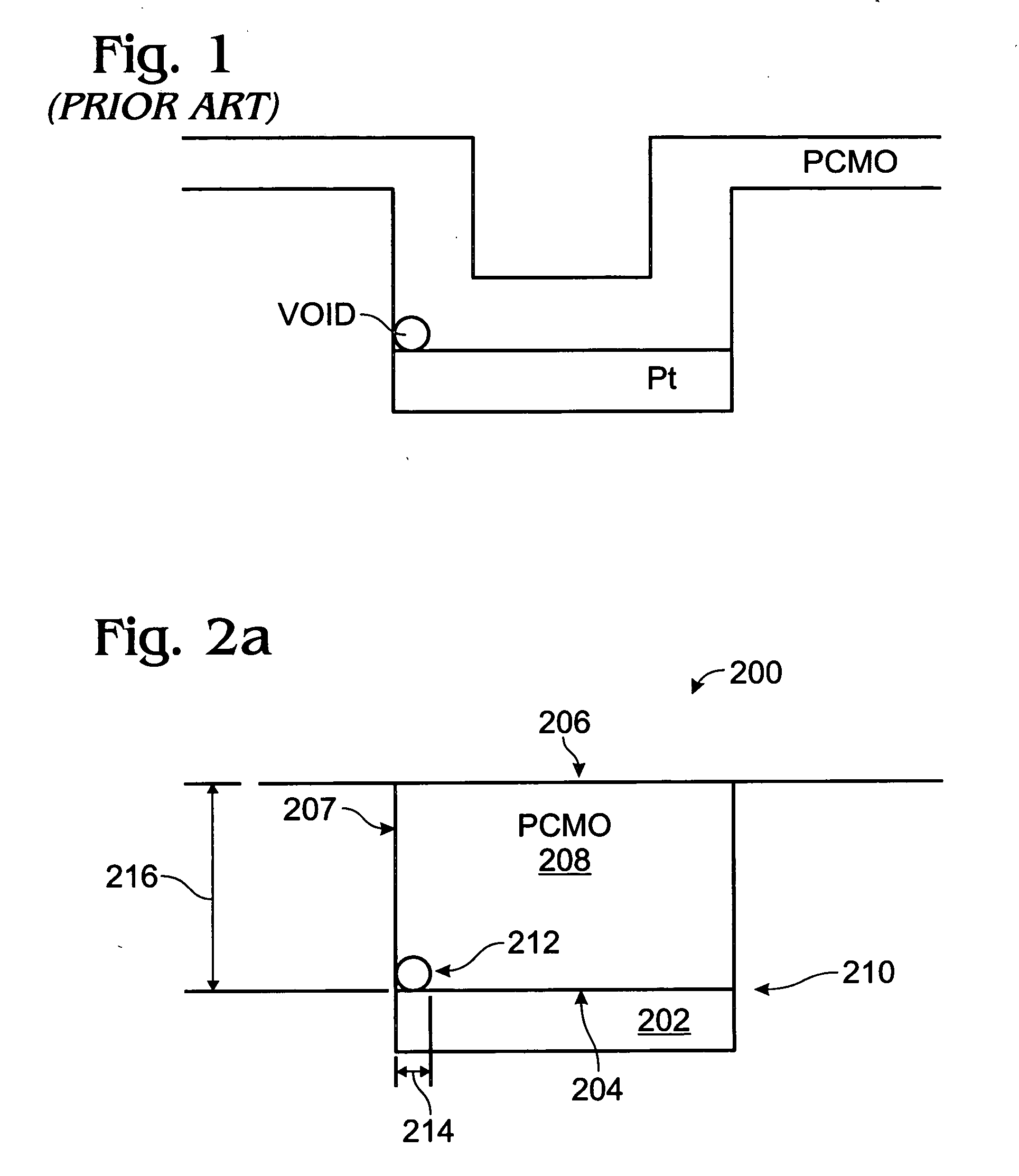PCMO spin-coat deposition
a technology of pcmo and spin-coat, which is applied in the direction of chemistry apparatus and processes, instruments, and semiconductor/solid-state device details, etc., can solve the problems of reducing reducing the leakage current, and voids that are extremely detrimental to the performance of rram devices
- Summary
- Abstract
- Description
- Claims
- Application Information
AI Technical Summary
Benefits of technology
Problems solved by technology
Method used
Image
Examples
Embodiment Construction
[0020]FIG. 2a is a partial cross-sectional view of the present invention void-free PCMO film structure. The structure 200 comprises a substrate 202, including a noble metal, with a surface 204. The substrate 202 can be a material such as Pt, Rh, Ir, Pt—Rh, Pt—Ir, or Ir—Rh. However, other noble metals, noble metal compounds, and even other metals besides noble metals can be used in other aspects of the invention. A feature 206 is shown that is normal with respect to the substrate surface 204. Alternately stated, the feature 206, which can be either a via or a trench, has an element or structure, such as a sidewall 207, that is formed in a vertical plane perpendicular to the horizontal surface 204. Note, the feature 206 may also have an element or structure, such as a via or trench bottom surface formed in a plane that is parallel to the surface 204.
[0021] A PCMO film 208 overlies the substrate surface 204. The Pr1−XCaXMnO3 film 208 X variable may be in the range of 0.1 to 0.6. A voi...
PUM
| Property | Measurement | Unit |
|---|---|---|
| time | aaaaa | aaaaa |
| time | aaaaa | aaaaa |
| concentration | aaaaa | aaaaa |
Abstract
Description
Claims
Application Information
 Login to View More
Login to View More - R&D
- Intellectual Property
- Life Sciences
- Materials
- Tech Scout
- Unparalleled Data Quality
- Higher Quality Content
- 60% Fewer Hallucinations
Browse by: Latest US Patents, China's latest patents, Technical Efficacy Thesaurus, Application Domain, Technology Topic, Popular Technical Reports.
© 2025 PatSnap. All rights reserved.Legal|Privacy policy|Modern Slavery Act Transparency Statement|Sitemap|About US| Contact US: help@patsnap.com



